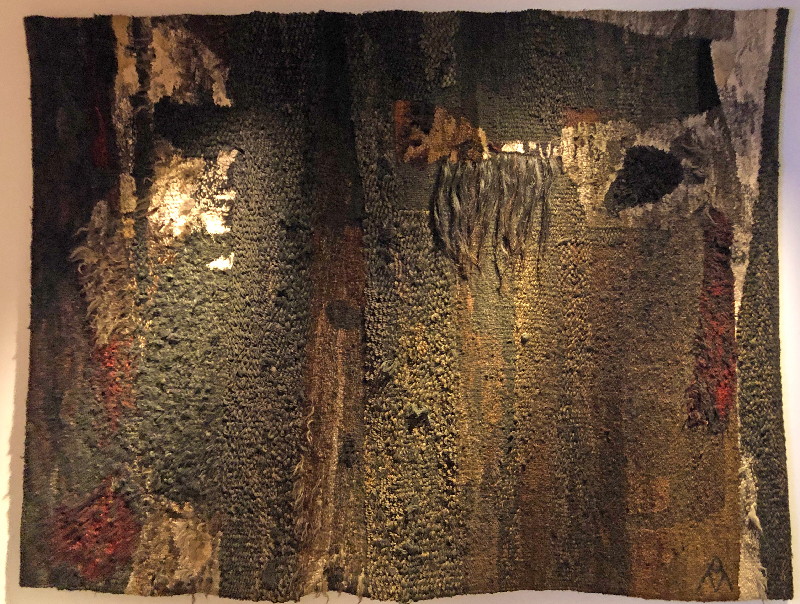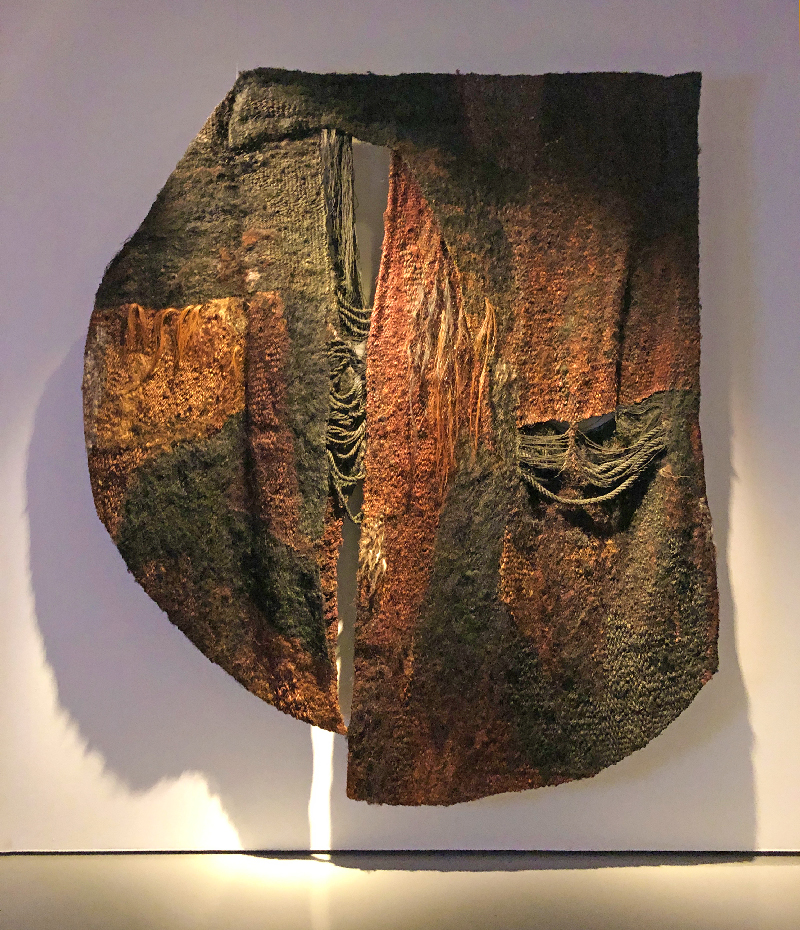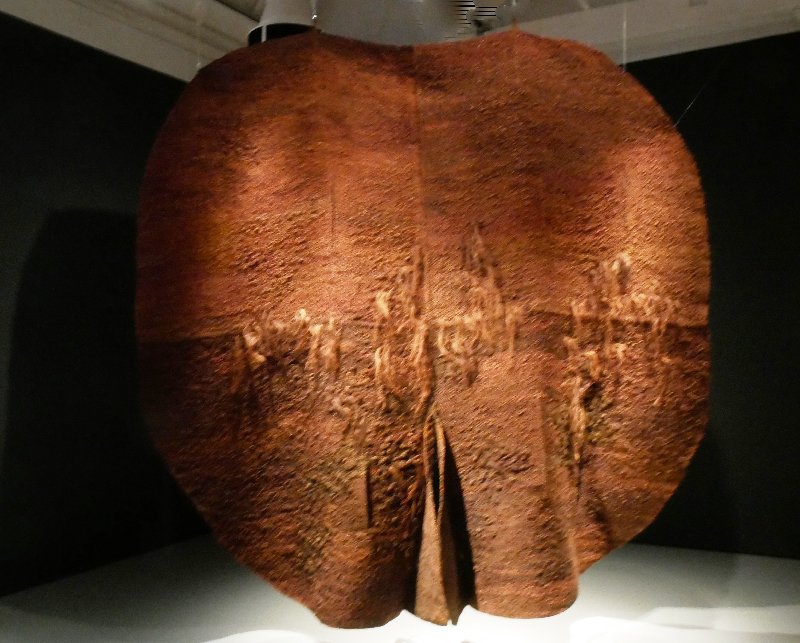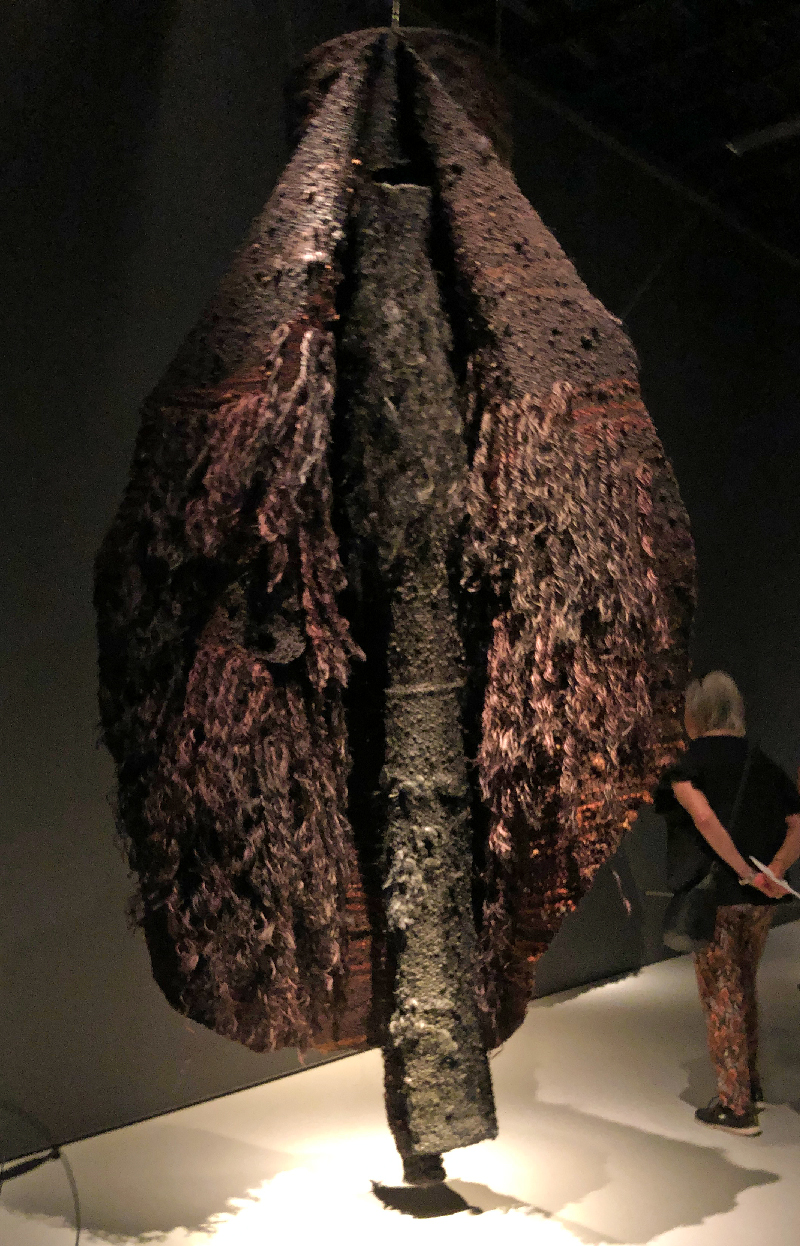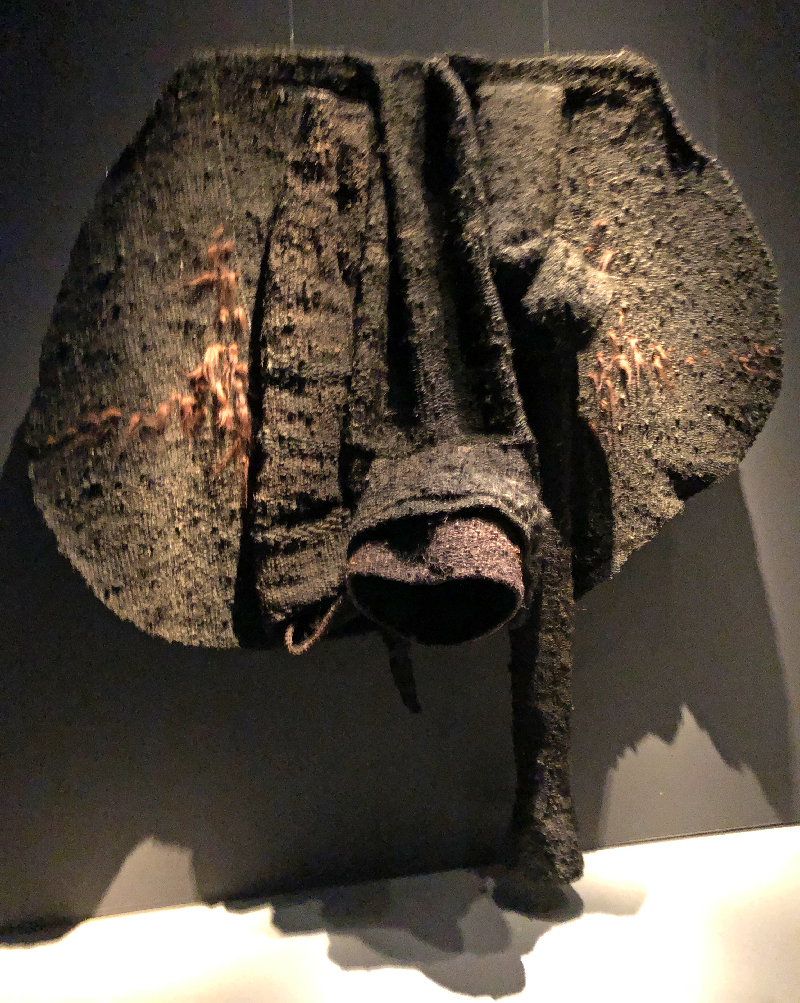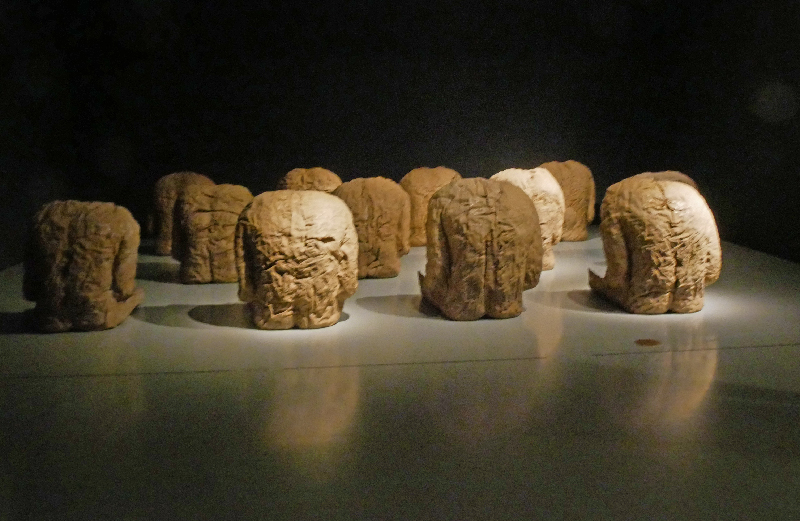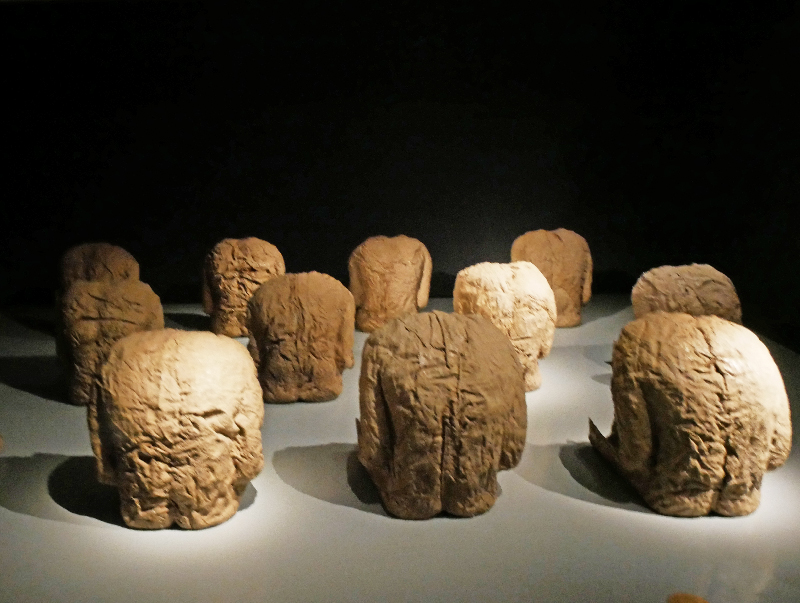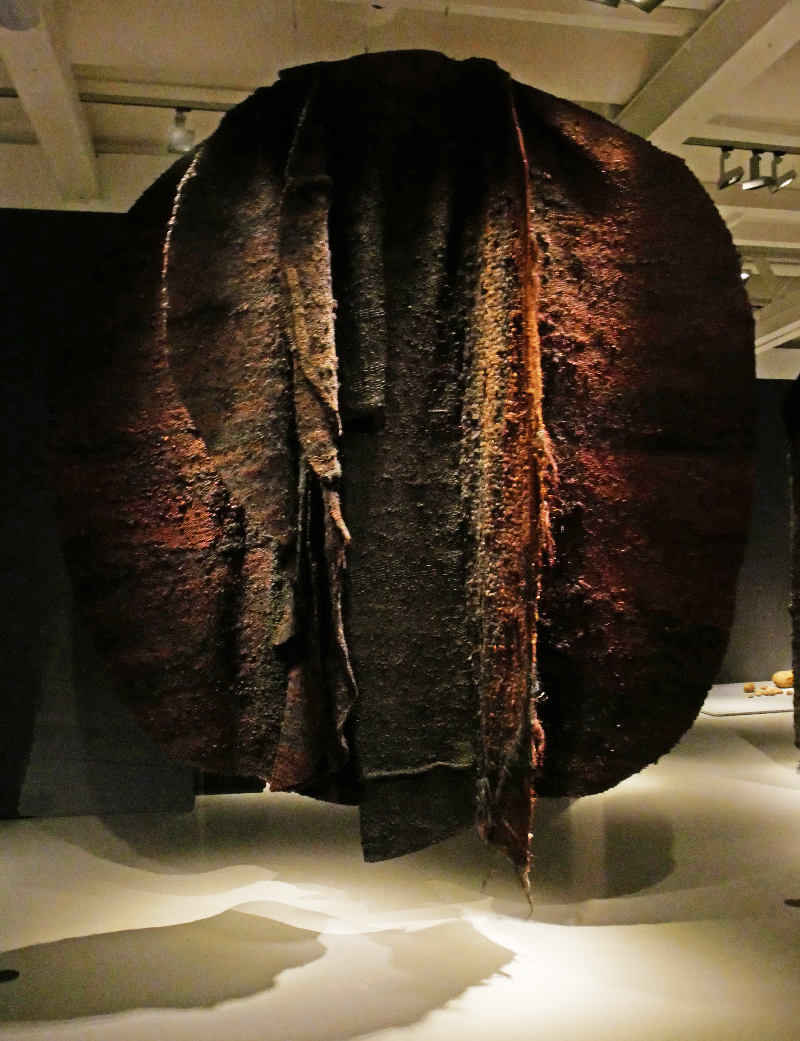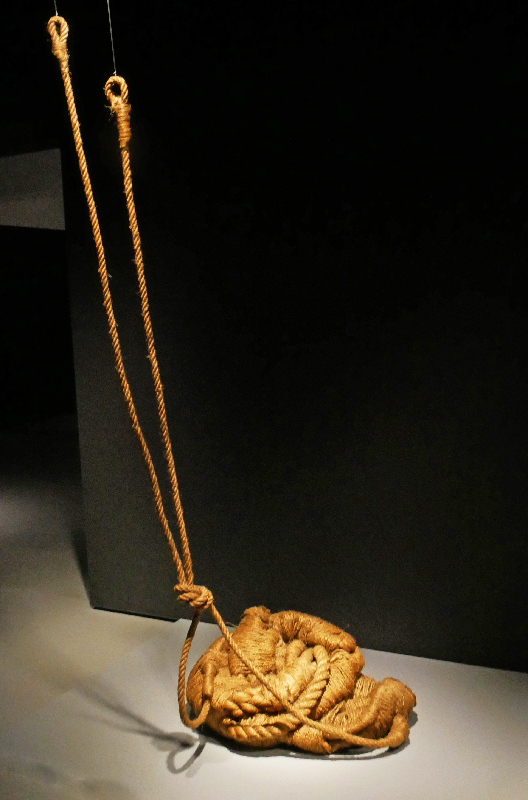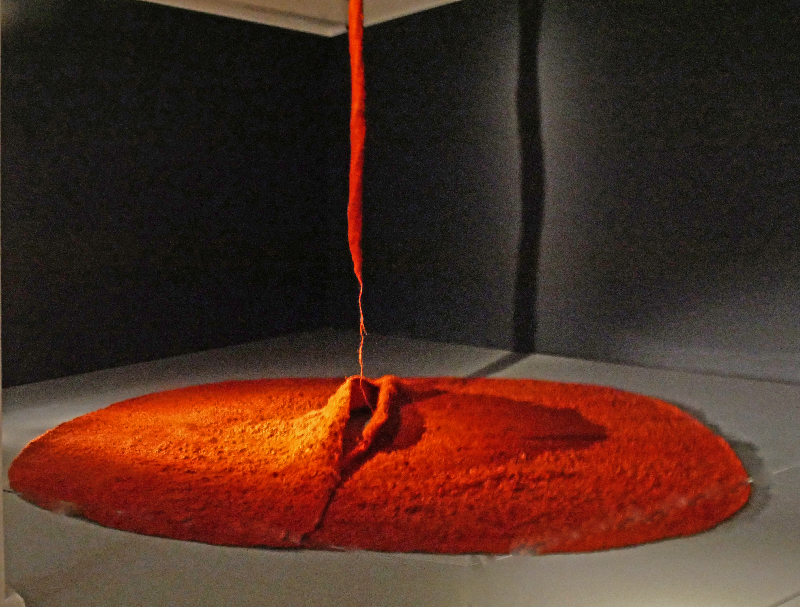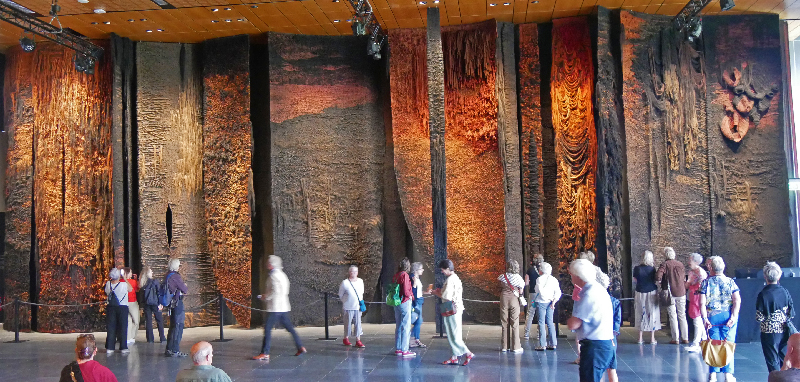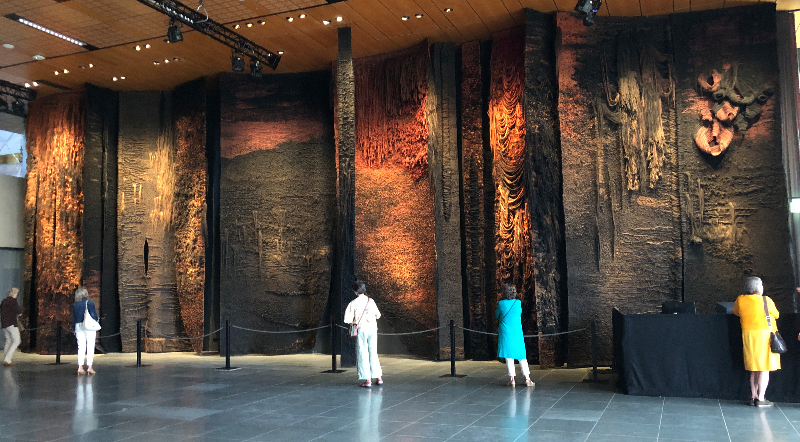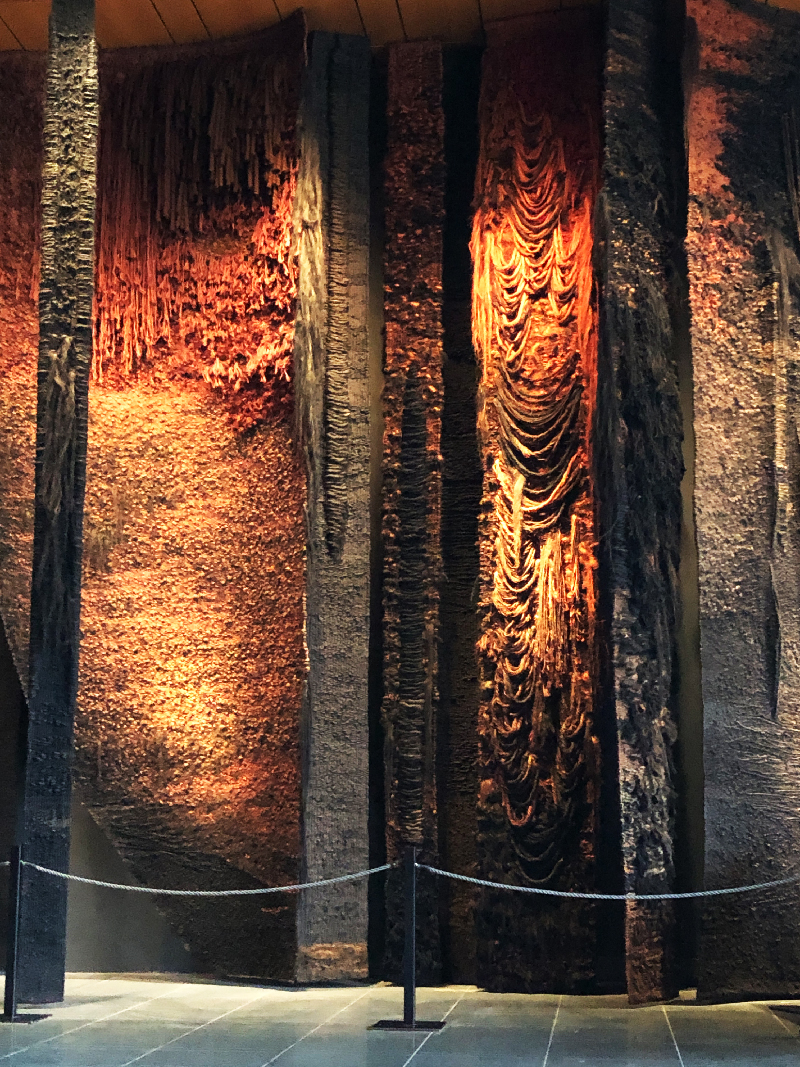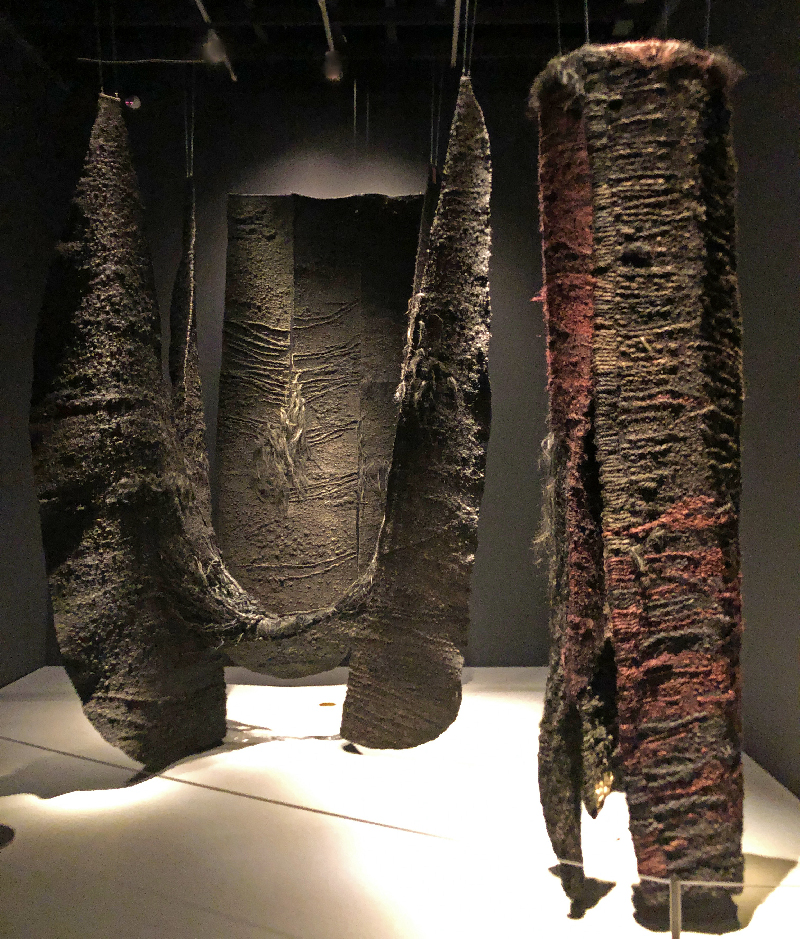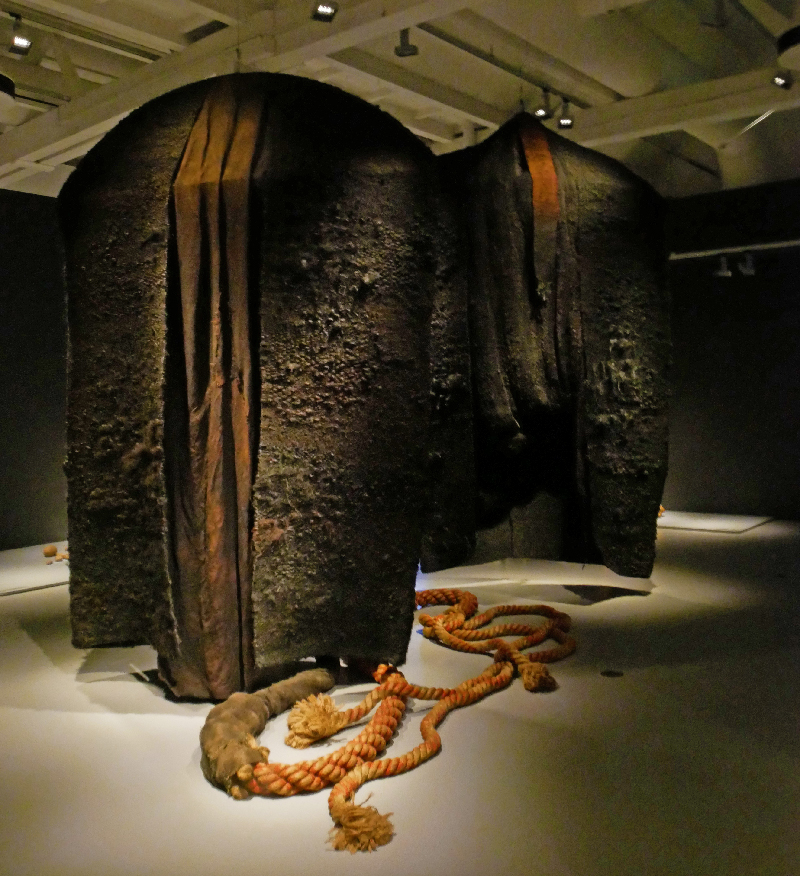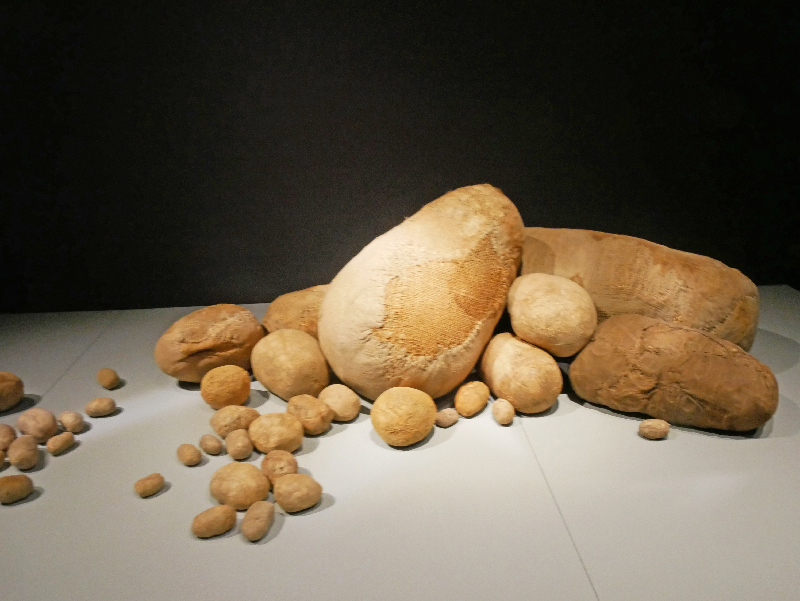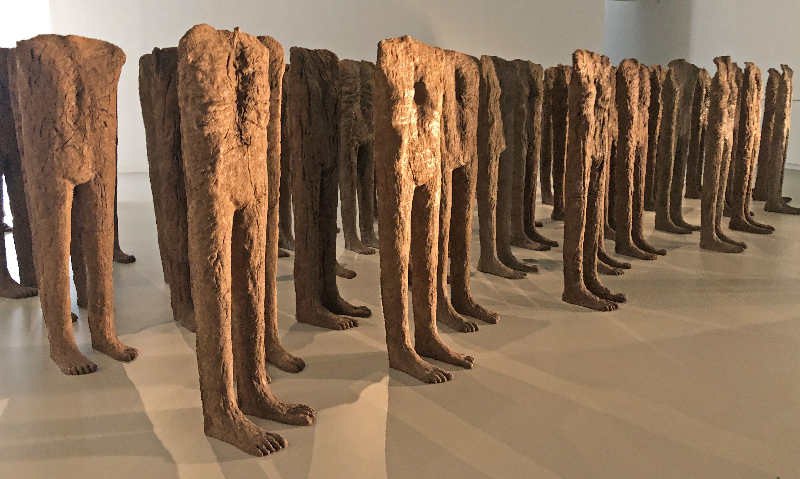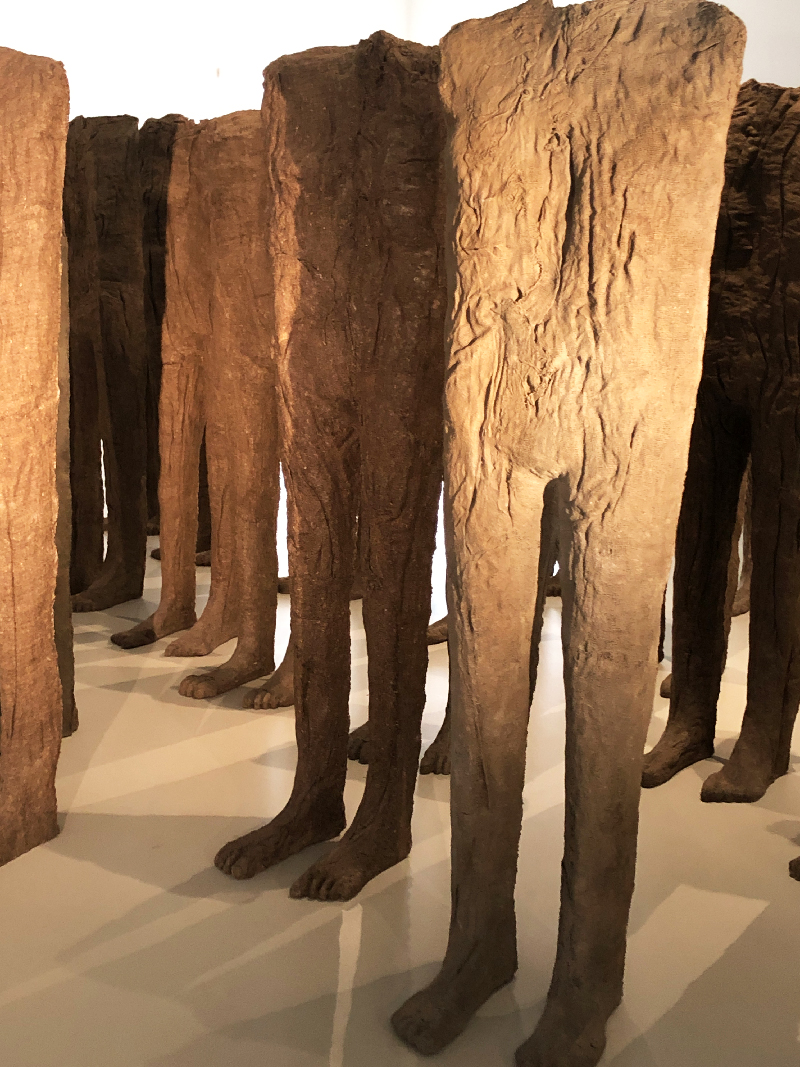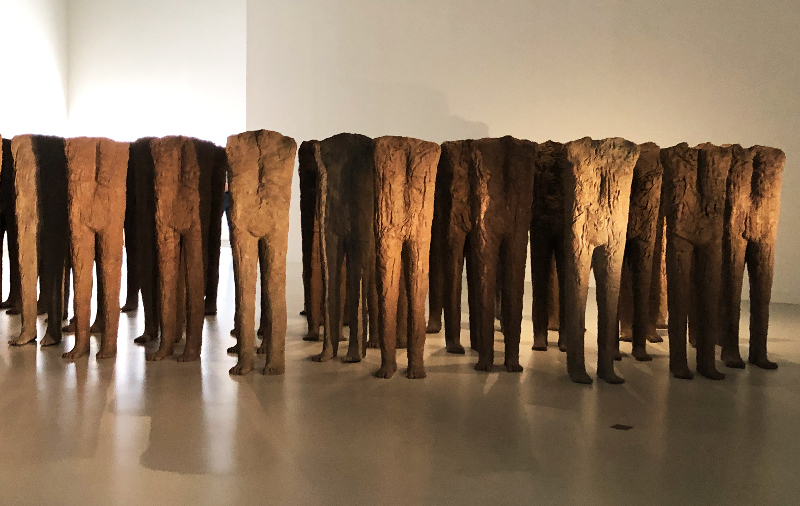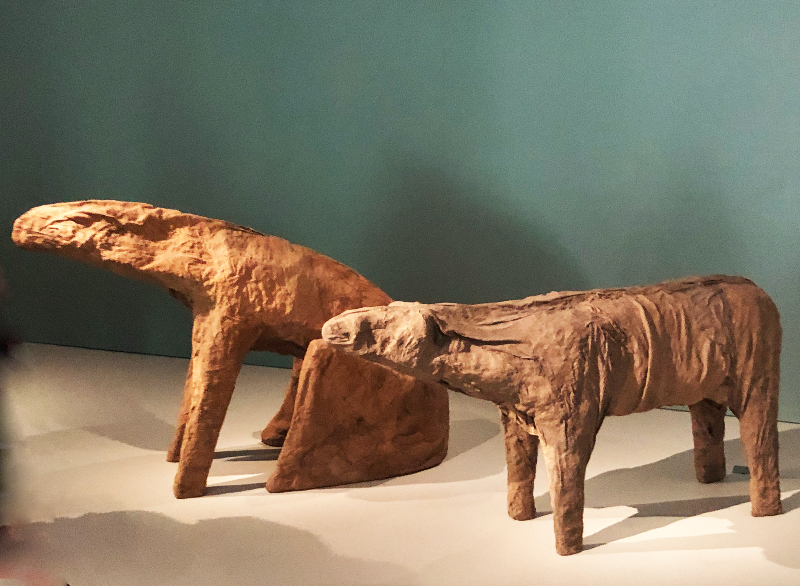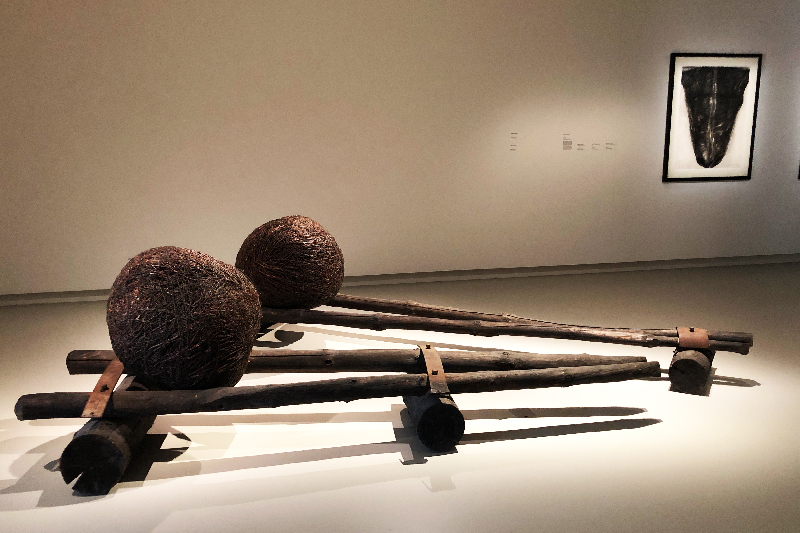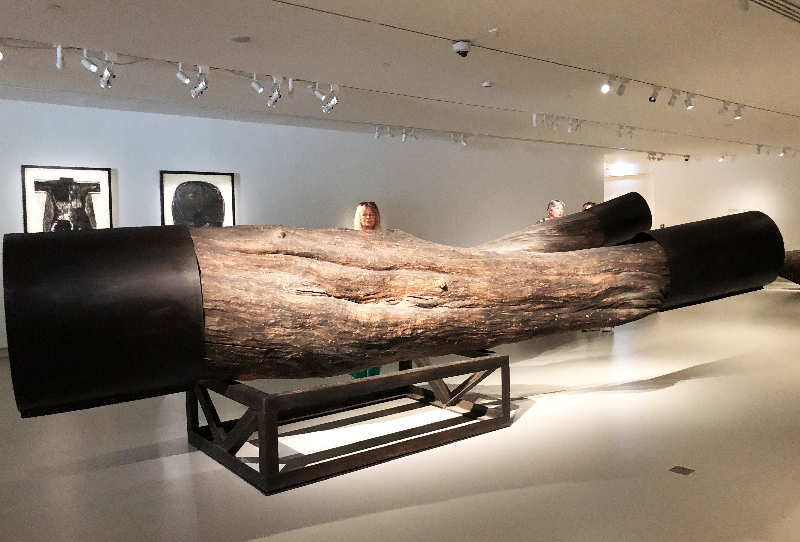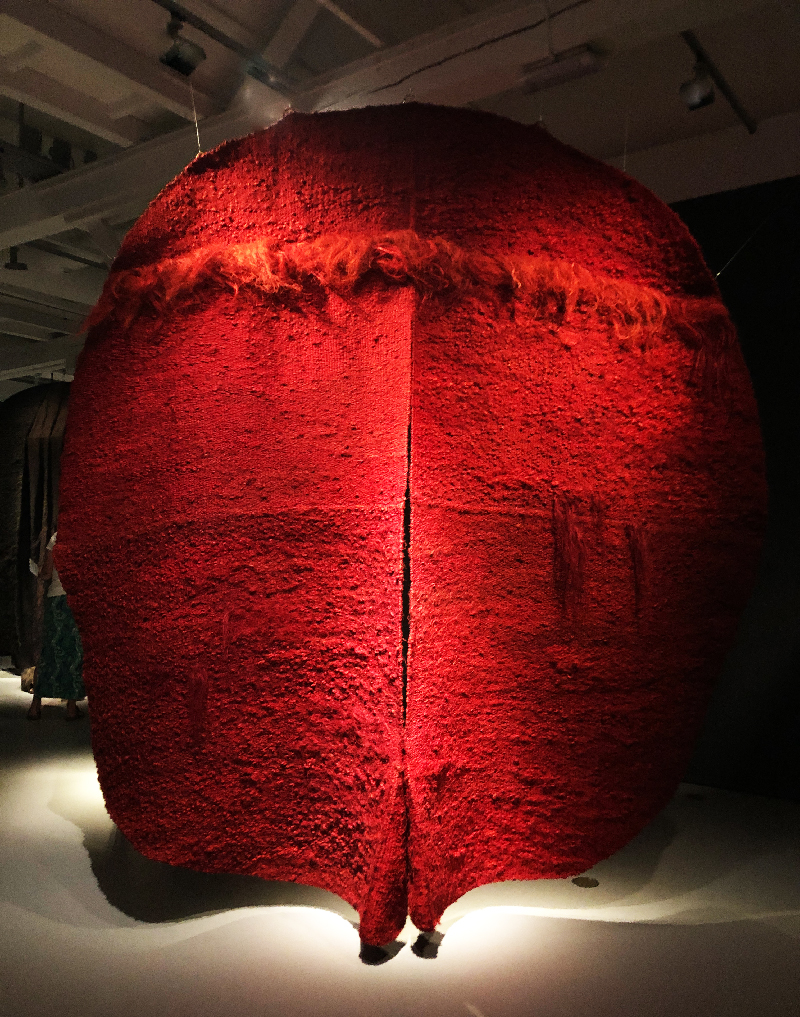
Triptych – Great, Greater, Greatest
In spring 2025, the Netherlands opened its doors to the world of Magdalena Abakanowicz (1930–2017). The Polish artist ranks among the most important of the 20th century: with her monumental sculptures and installations she reshaped art history, explored the relationship between humanity, nature, and society, and inspired generations of artists. She is regarded as the founder of installation art and elevated textiles to a fully recognized art form.
From April 18 to August 24, 2025, the TextielMuseum in Tilburg, Het Noordbrabants Museum in ’s-Hertogenbosch, and the Provinciehuis Noord-Brabant jointly presented a major exhibition – supported by numerous partners, giving Abakanowicz the recognition she deserves in the Netherlands. In autumn, Het Noordbrabants Museum will publish a richly illustrated catalogue, available November 2025 at 40 Euro via Amazon.
Provinciehuis Noord-Brabant – Bois le Duc
Abakanowicz’s largest work can be found in Brabant: Bois le Duc, consisting of 19 woven panels, each over 7 meters high and 22 meters wide. This monumental piece was created especially for the hall of the Provinciehuis designed by architect Huig Maaskant.
Het Noordbrabants Museum – Human Nature
Abakanowicz’s work emerged in the aftermath of World War II and under Soviet rule. Themes such as freedom, oppression, and the fragile balance between humanity and nature run throughout her oeuvre. In 1971, after attending a meeting of the Club of Rome, she began to incorporate the issue of climate change into her thinking.
The museum places her works in dialogue with contemporary artists such as Anish Kapoor, Kimsooja, Marlene Dumas, and Kader Attia. The exhibition was further enriched by a dance performance by Nicole Beutler and a new film by Kristina Benjocki and Stijn Verhoeff.
TextielMuseum – Everything is made of fiber
Until September 21, 2025, the TextielMuseum continued to present Abakanowicz’s textile universe: monumental fiber sculptures that blur the boundaries between art and nature. Her fascination with textures and materials led her from weaving to depictions of the human body and, ultimately, to spatial installations – pioneering works of installation art.
The exhibition also offers insights into her creative process. Her studio in Warsaw has been preserved since her passing in 2017, maintained by her former assistants. A film, largely shot there, illustrates Abakanowicz’s unique working methods.
“Art will remain the most astonishing activity of mankind, born out of struggle between wisdom and madness, between dream and reality.” – Magdalena Abakanowicz
Personal Impressions
I visited the three exhibitions starting with Tilburg, where the installations were curated by Marta Kowalewska, curator at the Central Museum of Textiles in Lodz, who had kept the rooms in a mysterious dark light. I had seen the two major exhibitions on the textiles of Abakanowicz at the Central Museum of textiles (https://www.textile-forum-blog.org/2018/02/metamorphism-magdalena-abakanowicz/) a year after her death in 2017, and therefore was familiar with her way of curating the work of this great artist. In Tilburg the installation was more intimate and smaller, but had captured the essence of Abakanowicz work! These textile art works were once seen as just craft and Abakanowicz herself regretted that, she said of her success:“Abakans brought me global fame, but they were also a burdon, like a sin you cannot admit to. Because weaving closed the doors to the world of art“ (1). What I heard about her dealing with textile art colleagues, was that she always went on a distance, maybe in order not to be seen as a textile artist. But there were more famous textile artists like Jolanta Owidzka and Wojciech Sadley and more, who together with Abakanowicz, were perceived by the international public as „Polish Textile Art“. When she could finally set up her own workshop in 1970 she decided to change subject and look for new means of expression (2.).
In her Tilburgs exhibition all is textiles and her early work, whereas the exhibition at the Noordbrants Museum in Den Bosch also showed some textile works (Red Abakan) but more of her later sculptural work like the „Crowd“, the „Mutants“ both made of jute and epoxy, the „Black Balls“ and „Anasta“ made from wood and iron. Even thoug I liked the works, there was not such a strong unity in the exhibition as a whole. Also there were works on paper from Anish Kapoor, Kimsooja, Marlene Dumas and Kader Attia added to this exhibition, with made not so much sense to me. Where these artists there to show that she belongs in this category? This was obvious! In Tilburg there were Dutch textile artists from the same time exhibited, which made more sense to me, seeing how far ahead of her time Abakanowicz was!
The real surprise was the „Bois Le Duc„ piece, made from 19 tapestries, covering a whole wall in the Bois le Duc Hall in an official building of the Province. Over100 visitors were there to see a work that never had been on show before, the largest that Abakanowicz ever made. Personally, I did not find it her very best work but that was maybe due to the fact that it was serving as a piece of decoration (red chairs in terrible colour could not be overlooked)! The whole building was full of textile art, that the architect Maaskant had seen at the Lausanne Biennale! I saw a large Sheila Hicks work and a huge wonderful textile collage from Krijn Giezen a Dutch textile artist. It was a pity not to be able to see more due to limited time.
All in all it was worth the two-days trip to see the greatest show of Magdalena Abakanowicz in the Netherlands! I could not have missed it!
Beatrijs Sterk
1.(Abakanowicz, Abakany (in:)Magdalena Abakanowicz, Centrum Sztuki Współczesnej Zamek Ujazdowski, Warsaw1995, p. 28.)
2.(Magdalena Abakanowicz, Fate and Art, Monologue, Skira, Milano 2008, p. 66)
